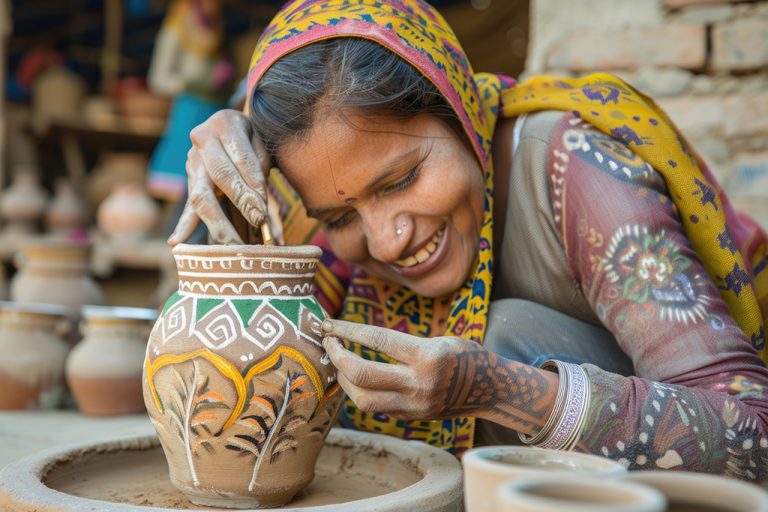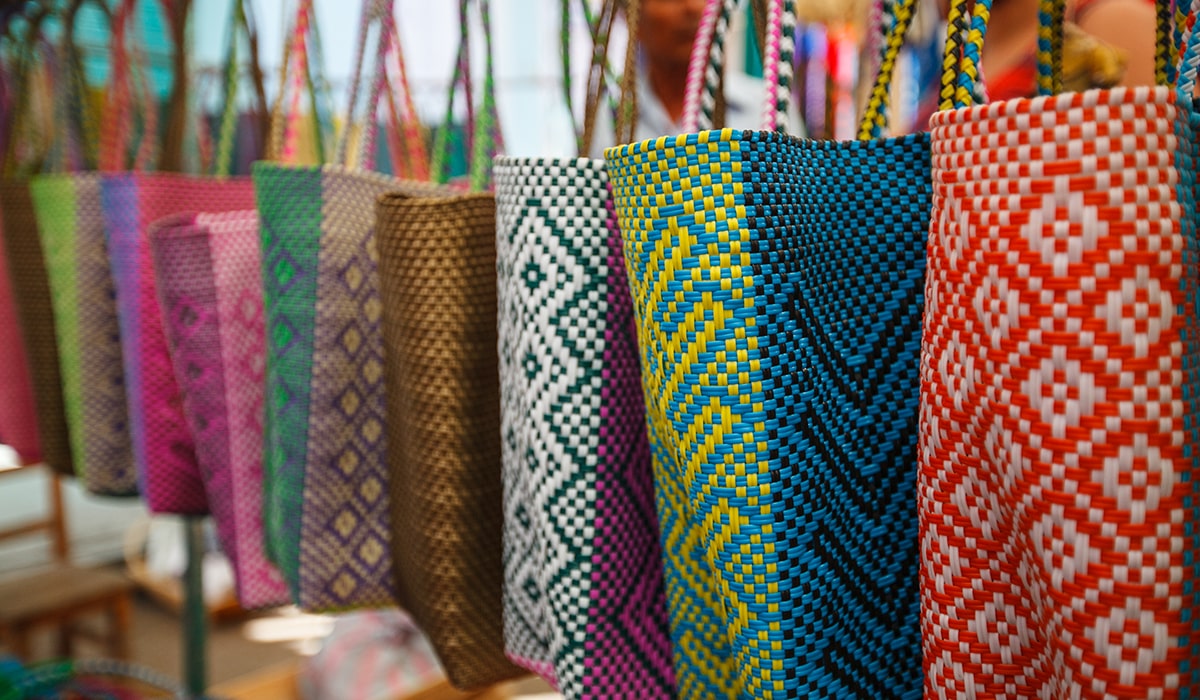India’s rich cultural heritage is intricately woven into its vibrant tapestry of handicrafts, reflecting centuries-old traditions, skills, and craftsmanship passed down through generations. From intricate embroidery to exquisite pottery, India’s diverse handicrafts showcase the country’s artistic prowess and cultural diversity. In this article, we delve into the enchanting world of Indian handicrafts, celebrating the artisans who keep these timeless traditions alive.
A Tapestry of Traditions :
India’s handicrafts are as diverse as its people, with each region boasting its unique artistic styles and techniques. From the colorful Phulkari embroidery of Punjab to the intricate Kantha stitch of West Bengal, and the vibrant Warli paintings of Maharashtra, every corner of India has its signature craft form that tells a story of its cultural heritage.
Skilled Artisans :
At the heart of India’s handicraft industry are the skilled artisans who dedicate their lives to preserving and perfecting traditional craft techniques. These artisans often belong to generations-old artisan families, where craftsmanship is a way of life passed down from parents to children. Their meticulous attention to detail and commitment to quality craftsmanship are what make Indian handicrafts truly exceptional.

Diverse Craft Forms :
Indian handicrafts encompass a wide range of art forms and materials, including textiles, pottery, metalwork, wood carving, and more. Each craft form requires specialized skills and knowledge, with artisans often mastering multiple techniques over a lifetime of practice. Whether it’s the intricate zari work of Banarasi sarees or the delicate filigree jewelry of Odisha, Indian handicrafts offer something for every taste and preference.
Economic Empowerment:
Handicrafts play a crucial role in India’s economy, providing livelihoods to millions of artisans, especially in rural areas where employment opportunities may be limited. Organizations and government initiatives that support artisan communities, such as the Ministry of Textiles’ “Handloom and Handicrafts Sector” and various craft clusters, help empower artisans economically while preserving their cultural heritage.
Global Appeal:
Indian handicrafts have garnered widespread acclaim on the global stage, with enthusiasts and collectors worldwide appreciating their beauty and craftsmanship. International platforms like artisan markets, craft fairs, and online marketplaces have provided exposure to Indian artisans, enabling them to showcase their creations to a global audience and sustain their craft traditions.
Conclusion:
Indian handicrafts are not merely objects of beauty; they are embodiments of centuries-old traditions, craftsmanship, and cultural heritage. By supporting and celebrating the artisans behind these timeless creations, we contribute to the preservation of India’s rich artistic legacy while empowering communities and fostering economic growth. As we cherish these exquisite handcrafted treasures, let us also recognize the invaluable contribution of artisans in keeping India’s cultural heritage alive for generations to come.
References:
- Ministry of Textiles, Government of India.
- Crafts Council of India.
- National Handicrafts Development Corporation (NHDC).
- UNESCO: Intangible Cultural Heritage of India.
- Craftsvilla: Celebrating Indian Handicrafts.
